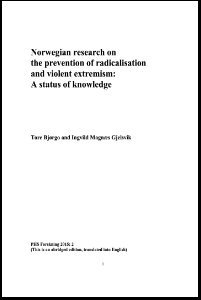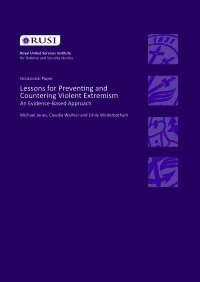By D. Elaine Pressman
Risk factors for violent individuals have been used in risk assessment protocols for decades. Such tools and guides have been shown to be a valid and reliable way to assess risk of future violence. The risk assessment protocols currently available, however, have questionable relevance to violent extremists and terrorists because the factors used to assess risk do not relate to the background and motivations of this group of violent actors. The need was identified for a relevant tool for the population of violent ideologically motivated extremists. Approaches to risk assessment for violence are described in the document. These include unstructured clinical judgment, actuarial approaches and structured professional judgment (SPJ). Unstructured approaches have been criticized for not demonstrating high validity or good inter-rater reliability. Given the low base rate of violent extremists, it is difficult to create empirically based actuarial prediction instruments for violent extremism. The structured professional judgment approach (SPJ) has been used successfully with forensic populations and was considered appropriate for a tool to address risk assessment for the population of violent extremists. As current SPJ guides were found to be inadequate to address the specific historical and contextual features of violent extremists, a new SPJ guide was developed and is described in this document. The major goals of the project were to identify and compare the specific characteristics and factors of those who perpetrate “general” criminal violence and those who perpetrate ideologically motivated violence, to highlight the salient differences among the historical, contextual, attitudinal and protective risk factors of these types of criminal violence and to construct a new tool to assess the risk of violence in ideologically motivated extremists. ‘Political violence’, ‘radicalization’, ‘extremism’ and ‘terrorism’ were defined and elaborated in the document. The most significant risk factors relevant to violent extremism and terrorism were extracted from the literature and organized into a structured professional judgment (SPJ) protocol. Five categories were identified as risk factors and relevant items were identified for each category. These categories are modeled after other well-established SPJ tools but are item specific to violent extremism. The categories include attitude factors, contextual factors, historical factors, protective factors and demographic factors. A preliminary model for the assessment of de-radicalization and disengagement efficacy was proposed. The new SPJ protocol, Violent Extremist Risk Assessment or VERA is designed to be used with persons having a history of extremist violence or having been convicted of such offences. At this stage of development, the VERA is a conceptual “research” tool intended to generate debate and discussion.
Ottawa: Public Safety Canada, 2009. 44p.






